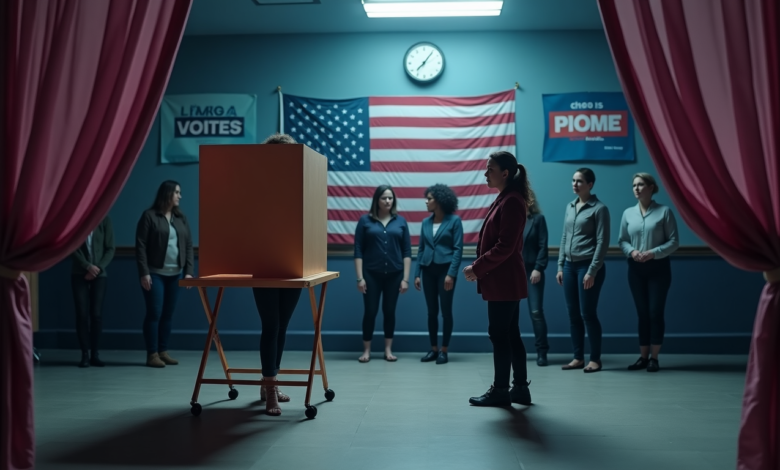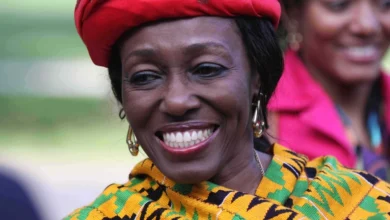
Why Women Voters Didn’t Deliver for Democrats This Time
Women’s voting patterns have undergone a major change, as shown by recent election results. This trend challenges what we knew about Democratic Party support. Democrats traditionally enjoyed strong backing from women voters, but that advantage is getting smaller. Women across multiple states and districts now show less enthusiasm for Democratic candidates.
Several factors drive this remarkable transformation. Economic worries, social issues, and new campaign approaches play crucial roles. Supreme Court rulings have altered the political landscape. These changes, combined with rising inflation and higher living costs, have transformed many women voters’ political priorities. Both parties must now rethink their approach to voter outreach and messaging as they prepare for the 2024 election cycle.
Demographics Breakdown: Where Democrats Lost Ground
Recent election data shows substantial demographic changes that created challenges for Democratic candidates. Exit polls revealed a 10 percentage point gender gap between Harris and Trump. Harris captured 53% of women voters, which dropped from Biden’s 57% in 2020 and Clinton’s 54% in 2016.
White women became a vital voting bloc and made up 40% of all voters. Trump gained 53% of white women’s votes while Harris received 46%, despite her campaign’s focus on abortion rights. The education gap among white women stood out, especially when you have non-college-educated white women supporting Trump by 28 percentage points.
Latino voter support underwent dramatic changes:
- Harris: 56% overall support (down from Biden’s 63% in 2020)
- Trump: 42% overall support (up from 35% in 2020)
Democrats saw mixed results across age groups. Harris led strongly among women aged 18-44 (55% to 43%). The gap narrowed among voters 45 and older (51% to 47%). Black women continued to be the strongest Democratic supporters. Harris won their vote by an overwhelming 85-point margin. However, Black and Hispanic American voter turnout decreased compared to previous elections.
Campaign Strategy Analysis
Harris’s campaign team has coordinated a major change in their approach to women voters. They moved away from traditional Democratic messaging. The campaign’s life-blood strategy presents abortion rights as a freedom issue instead of a choice narrative. Campaign strategists believe this appeals better to different demographic groups.
Digital advertising has become their main tool to reach key voter groups:
- Young women voters under 30
- Black and Latino communities
- Non-political audience segments
- Middle-class families concerned about economic issues
Campaign data reveals reproductive rights as the deciding factor for undecided voters. Women under 30 now rank abortion above inflation as their biggest concern. This focus shows promising results – polls indicate Harris leads Trump by a two-to-one margin among women voters on reproductive healthcare policy.
The campaign brings innovation through voter testimonials and TikTok-style content that targets “MomTok” audiences. They blend economic messages with reproductive rights advocacy. The team created and tested over 1,000 unique advertisements to measure their impact on voter opinions. Their data shows this multi-channel strategy works especially well with college-educated women voters. These voters show increased interest in Harris’s economic agenda that promotes new opportunities.
The Economy vs. Social Issues
The economy has become the deciding factor in how people vote lately, pushing social issues to the background for women voters. A remarkable 81% of registered voters say the economy matters a lot to their vote, and rising prices and everyday expenses drive this trend.
Women feel the effects of rising living costs more deeply since they make most household buying decisions. Their biggest economic worries show up in the numbers:
- 74% are really worried about food and consumer goods prices
- 69% stress about housing costs
- 40% fear job shortages
Social issues still matter, especially abortion rights where Harris leads by a wide margin (58% vs 29%). But economic anxiety now drives most women’s voting choices. Black and Hispanic women feel this pressure even more, with 68% of Black women and 70% of Hispanic women struggling to pay for household basics.
Harris’s campaign has made progress with its economic message. About 46% of women voters now trust her more than Trump (39%) to tackle rising household costs. This marks a big change from earlier polls that showed voters split evenly between parties on economic issues. Democrats still face challenges though, as ongoing inflation worries make working-class women voters uncertain about their choice.
Gender Politics in the 2024 Election
Women have consistently favored Democratic candidates in presidential politics since 1980. Recent elections show a remarkable 11-point gender gap, making it one of the widest divides since 1996.
The 2024 election reveals clear differences in how campaigns approach gender. Trump’s team promotes what they call “protector politics” at male-dominated events that celebrate traditional masculinity. Harris takes a different path by championing gender equality and reproductive rights.
These voting patterns tell an interesting story:
- Women support Harris over Trump by a margin of 54% to 46%
- Women’s voter participation keeps growing since 1980
- Harris enjoys overwhelming support from Black women at 92%
- Education levels create a divide among white women voters
Gender shapes more than just voter demographics. Trump’s message about “protecting women” generates mixed reactions. Harris pushes back against this protective stance with her message: “The women of America need him to trust them, not protect them.” Their contrasting approaches reflect deeper societal debates about gender roles and leadership.
Politics and gender have become deeply intertwined. The Supreme Court’s abortion decision reshapes how people vote and how campaigns operate. Women make up more than 54% of voters in recent presidential races, making their participation vital to electoral success.
Women’s voting patterns continue to change and create new challenges for Democratic candidates in upcoming elections. Economic pressures now drive voter decisions more than the social issues that once united women behind Democratic candidates. White, Black, and Hispanic women voters show new demographic trends that point to a transformation in political loyalties both parties need to address.
Democrats must balance economic messaging with social issues to win future elections while they retain strong ties to their core female voters. The smaller gender gap means political teams need fresh ways to reach voters, especially when you have everyday economic concerns to discuss. Women voters now care more about practical economic issues than ideological stances, which has altered the map of gender-based voting completely.






